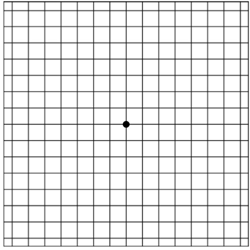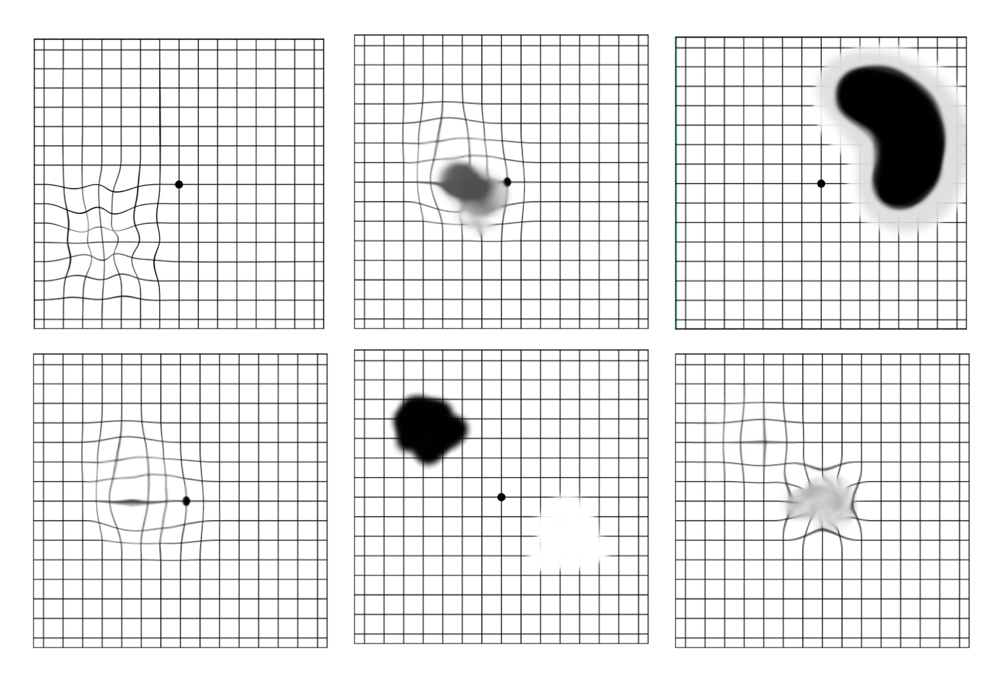Amsler Grids: A Lay Person’s Guide to Monitoring Macular Degeneration
It goes without saying that regular visits to your eye doc are essential to maintaining your vision and protecting it from the deteriorating effects of macular degeneration (MD) and other disorders. The Amsler grid is one of the best ways to do that.
Noticing changes in vision
And your doc probably told you, and probably reminds you at the end of every visit: “Be sure to call me immediately if there are any changes, abnormalities, or deterioration of your vision.”
But what does that really mean? Changes? Deterioration? What should you be watching for? What constitutes “something” that indicates your eye is experiencing an adverse event? How can you tell (see) what deserves that call to the doc? What does “something is wrong” actually look like?
Amsler grid instructions
You probably already know about the Amsler grid. You probably know that you should look at it every day. And here is an accepted set of instructions:
- Put on reading glasses, contacts, or any [of your] necessary eyewear.
- Hold the grid at a distance at which you can get most of the lines in focus; for most people, it’s the same distance at which you would hold a book.
- Close or cover one eye and look at the grid.
- When you’re done with one eye, cover the other eye, so that you test one eye at a time.
If you try testing with both eyes open at the same time, your brain may ignore your worse eye and focus only on your better eye, which could cause you to miss any changes that might be occurring with your vision.
Amsler grid

The picture at the left is what the grid looks like to an eye with no retinal problems. Recognizing that someone with retinal damage may never be able to see the grid as it is drawn... it is a simple grid containing 15 equally spaced horizontal and vertical lines with a small circular dot in the middle.
What does macular degeneration look like?
Following are some examples of what an abnormality may look like. Each one may indicate a particular clinical condition. But since this is a "lay person’s guide", we will leave the actual diagnosis to your doctor.
Macular degeneration symptoms on an Amsler grid

Macular degeneration symptoms in real life
And in the “real world,” this is what someone with MD might actually experience.
The image on the left shows a scene that is seen by a sighted-person. The image on the right shows the same scene as it might appear to someone who's eye is damaged by macular degeneration.
If you see something that looks like any of these examples and it’s different than the last time you visited the doctor, you need to see them again – SOON!!!
Check out our printable Amsler grid to check your vision daily in this article.
Community Poll
Which type of macular degeneration are you seeking support for?

Join the conversation